Abolitionist Activism in Oberlin College and the Influence of Harriet Beecher Stowe
Introduction
Text-to-speech Audio
Images
Women were permitted to study in Oberlin since its founding in 1833. However, women were limited in their choice of education programs as only some programs permitted female students (Image Credited to Oberlin College Today)
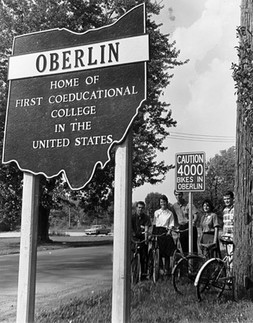
Established in 1830 Lane Theological Seminary came to symbolize the diverging beliefs about slavery held in the Presbyterian Church. (Image Credited to Oberlin Lane Debates Resources))
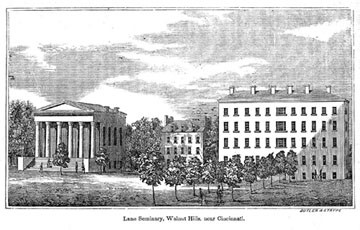
The Edmonson sisters Mary (left) and Emily (right). Shortly after their enrollment Mary contracted tuberculosis and died. After graduation Emily became a teacher as well as an abolitionist activist until her death in 1895 (Public Domain Image).
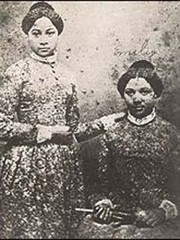
An excerpt from a letter written by Hiram Wilson to Brother Whipple describing his adjustment to living in Canada and the plight of fugitives slaves desperately looking for refuge on Canadian soil (Image Credited to Huron University "The Letters of Hiram Wilson").
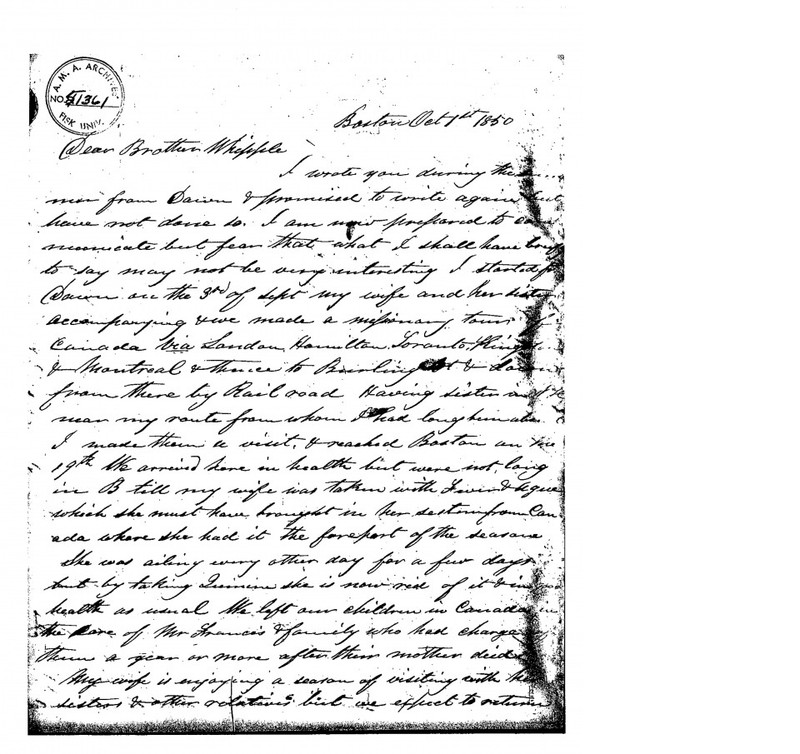
Josiah Henson original cabin in the Dawn settlement. The cabin currently resides near the Sydenham River as a museum. Josiah Henson connection to Uncle Tom’s Cabin shaped the Canadian identity on slavery and emancipation as Henson became one of the most well known Black leaders in Canada (Image Credited to Canadian Geographic).
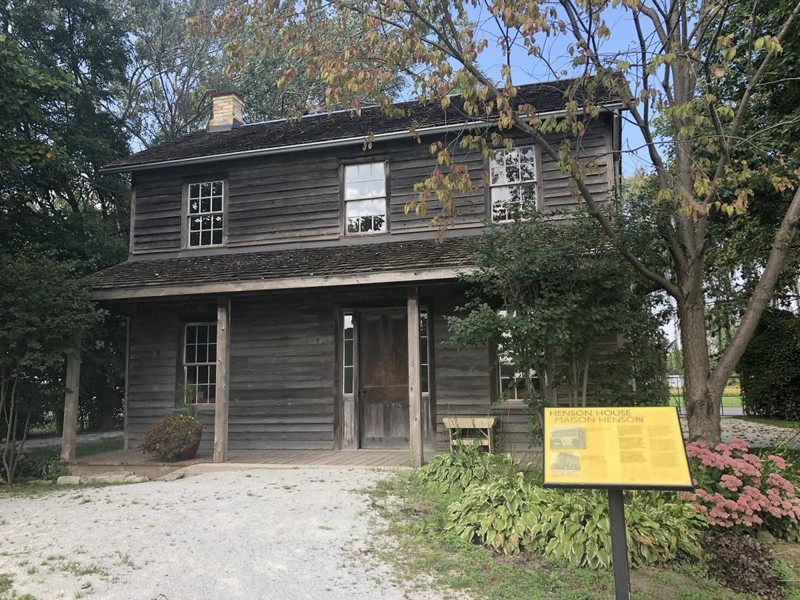
Backstory and Context
Text-to-speech Audio
Lane Theological Seminary played a significant role in Oberlin’s admission of the Lane Rebels. Lane Theological Seminary began as a Presbyterian school with traditional orthodox foundations that emphasized theology over social activism. Lynn Beecher was the president in 1832. Lane Theological Seminary had a diverse student body spilt between traditional orthodoxy and social reform, the latter led by the radical abolitionists, Charles Grandison Finney and Theodore Weld. Lynn Beecher preached unity as the essential force in which sustained change could be achieved. Lynn Beecher restrained abolitionist activism to sustain equilibrium in the church. The three streams in the Lane Theological Seminary came to a head in 1834 in which the school hosted the Lane debates. Charles Finney and Theodore Weld followers decided to separate from the Lane Theological Seminary as the restrictions towards abolitionist activism prevented the fundamental values of their religious cause. The students who left Lane Theological Seminary became known as the Lane Rebels. The Lane Rebels were invited to the theological department at Oberlin College in 1835, however, the Lane Rebels would only agree to Oberlin's offer under the conditions that Black students be permitted to study in the college.
Harriet Beecher Stowe agreed with her father's view that Presbyterian ministry should be rooted in action, however, she believed slavery as an evil that prevented salvation thus she rejected her father’s passive approach to liberation. Stowe supported Oberlin College’s mission to eradicate slavery as part of one's religious duty. In 1852 whilst completing Uncle Tom’s Cabin Stowe funded the education of two fugitive slaves; Mary and Emily Edmonson at Oberlin college. Stowe wrote letters to the sisters in which she expressed financial and educational support providing aid to their literary and grammar skills. Stowe hoped that through this education the sisters could become teachers in Upper Canada. Stowe found education as a fundamental tool for in the mobilization of Black individuals out of slavery and into the paid workforce. Oberlin College continued to be a progressive institution that produced civil rights activist that fought for abolition and race equality in the transatlantic.
Dawn was conceptualized in 1842 by Hiram Wilson, a Lane Rebel attending Oberlin who believed in educational accessibility for the Black community. Dawn was an all-Black community that aimed to provide temporary refuge for fugitive slaves. The colony allowed for the practice of manual, practical and educational skills in an environment free of prejudice and racism. The primary objective behind Dawn was the intention that the community would help Blacks eventually assimilate into white society. Dawn was built on two hundred acres with a population of five hundred. The community was sustained through farming and also hosted a manual labour school.
In 1836, Hiram Wilson, on behalf of Oberlin college visited Upper Canada to inspect the living conditions of fugitive slaves. Wilson’s experience in Canada inspired him and five other Oberlin students to pioneer a schooling movement for Black fugitives in Canada. Wilson’s educational initiative garnished the attention of James Cannings Fuller who raised the initial funds for Dawn in Upper Canada. Dawn became the home of Josiah Henson often associated with Harriet Stowe’s literary character Tom.
Josiah Henson was a former slave born in 1789. Henson’s life painted the brutal legacy of slavery as he was subjected to physical, emotional abuse by his masters. Henson escaped from his owner and migrated to Canada in 1830 where he found employment through preaching and the selling of livestock. Henson found that many Black fugitives that resided in Upper Canada were subjected to unfair land settlements that drove them to further poverty. In 1836 Josiah Henson and Hiram Wilson met in Colchester calling for a formal financial plan for the creation of Dawn. In 1842 Henson moved to Dawn as a central figure in the community.
Henson’s life and the community of Dawn was transformed after the publication of Stowe’s Uncle Tom’s Cabin in which the horrors of slavery were exposed to mainstream media through the vehicle of literature. Stowe’s novel generated discourse in academic and public spheres raising societies awareness on fundamental human rights, challenging the legal, political and financial systems of America that supported slavery. Uncle Tom's Cabin, sold three hundred thousand copies after its first year of publication. Stowe, with the success of her novel, expanded her work to include antislavery publications that spread antislavery rhetoric across America by the press. Criticism of Uncle Tom’s Cabin dually arose from all sides of the slavery debate. Literary reviews doubted the accuracy of Stowe's portrayal of slavery. In particular, critics questioned the moral stature of Tom as a believable representation of a slave. To combat the growing skepticism Stowe wrote the A Key to Uncle Tom's Cabin, a compilation of works that supported her account of slavery in Uncle Tom’s Cabin. One of the works she employed as evidence was the biography of Josiah Henson. Stowe found parallels with his biography to that of her literary work but never publically declared him the as the real “Tom.” However, through Henson’s biographical ghostwriters and the later admission of Henson that he indeed was the literary icon, the public mind construed Henson as Uncle Tom. In 1940 Henson’s cabin was opened as a museum called Uncle Tom’s cabin becoming a historical site for the history of the Canadian abolition movement.
The alumni that graduated from Oberlin College and the abolition network that was built surrounding the College demonstrates the innovation and determination for social change that was issued in Oberlin. The Oberlin College dedication to the abolitionist moment as well as Harriet Beecher Stowe’s literary texts generated discourse in academic and public sphere raising societies awareness on fundamental human rights, transforming the idea of slavery from an economical tool to religious and moral debate.
Sources
Adams, Kimberly VanEsveld . Family Influences on "The Minister's Wooing" and "Oldtown Folks": Henry Ward Beecher and Calvin Stowe, vol. 38, no. 4. JSTOR.
Edmonson Sisters, History of American Women. Accessed November 24th 2019. http://www.womenhistoryblog.com/2016/01/edmonson-sisters.html.
Fraser, James W. Abolitionism, Activism, and New Models for Ministry. Presbyterian Historical Society, vol. 66, no. 2. JSTOR.
Hedrick, Joan D. "Peaceable Fruits": The Ministry of Harriet Beecher Stowe. , vol. 40, no. 3. JSTOR.
Hamand, Wendy. No Voice from England": Mrs. Stowe, Mr. Lincoln, and the British in the Civil
War. The New England Quarterly, vol. 61, no. 1. JSTOR.
Harriet Beecher Stowe's Life Uncle Tom's Cabin, Harriet Beecher Stowe Centre . Accessed November 24th 2019. https://www.harrietbeecherstowecenter.org/#.
Hartgrove, W B. The Story Of Josiah Henson. The Journal of Negro History, vol. 3, no. 1. JSTOR.
Movements in the United States, 1600-2000. Accessed November 24th 2019. https://womhist.alexanderstreet.com/oberlin/doc9.htm#a.
Nichols, Charles. The Origins of Uncle Tom's Cabin, vol. 19, no. 3. JSTOR.
Oberlin History Frequently Asked Questions and Timeline, Oberlin Heritage Centre. Accessed November 25th 2019. http://www.oberlinheritagecenter.org/researchlearn/historyfaqs.
The Edmonson Sisters: Teaching Black Women’s Activism in the 19th Century, New York
Historical Society. February 20th 2018. Accessed November 24th 2019. http://behindthescenes.nyhistory.org/edmonson-sisters-teaching-Black-womens-activism/.
The Letters of Hiram Wilson, WordPress. Accessed November 25th 2019. https://hiramwilson.wordpress.com/about-us/.
Uncle Tom's Cabin Historic Site, Ontario Heritage Trust. Accessed November 25th 2019. https://www.heritagetrust.on.ca/en/properties/uncle-toms-cabin.
Winks, Robin. The Blacks in Canada, Second Edition. Edition Second. Montreal, Kingston. McGill-Queen's University Press, 1997.
http://www2.oberlin.edu/external/EOG/OYTT/ch11.html
http://www2.oberlin.edu/external/EOG/LaneDebates/Resources.html
https://en.wikipedia.org/wiki/Edmonson_sisters#Oberlin_College
https://hiramwilson.wordpress.com/about-us/
https://www.canadiangeographic.ca/article/new-understanding-uncle-tom
